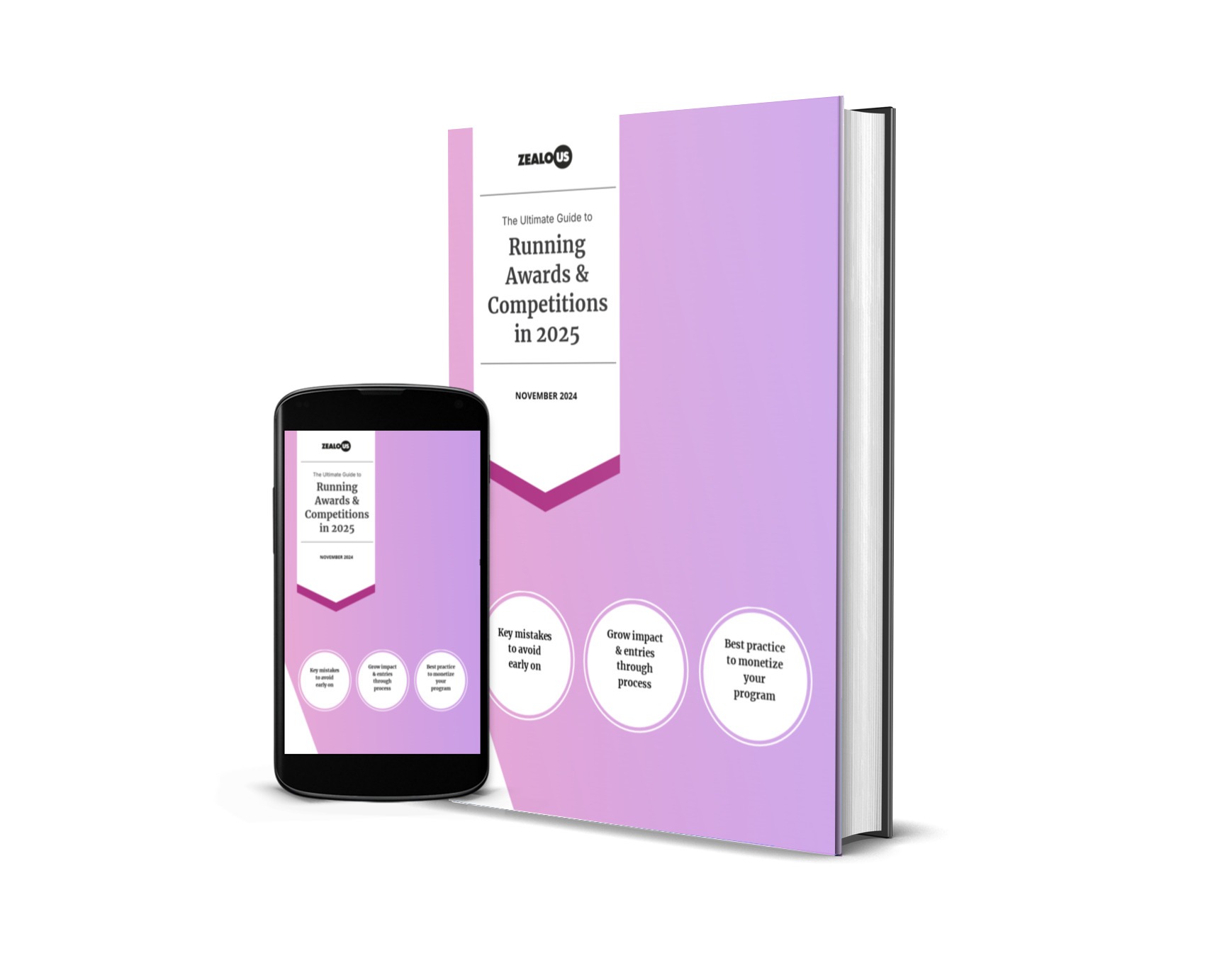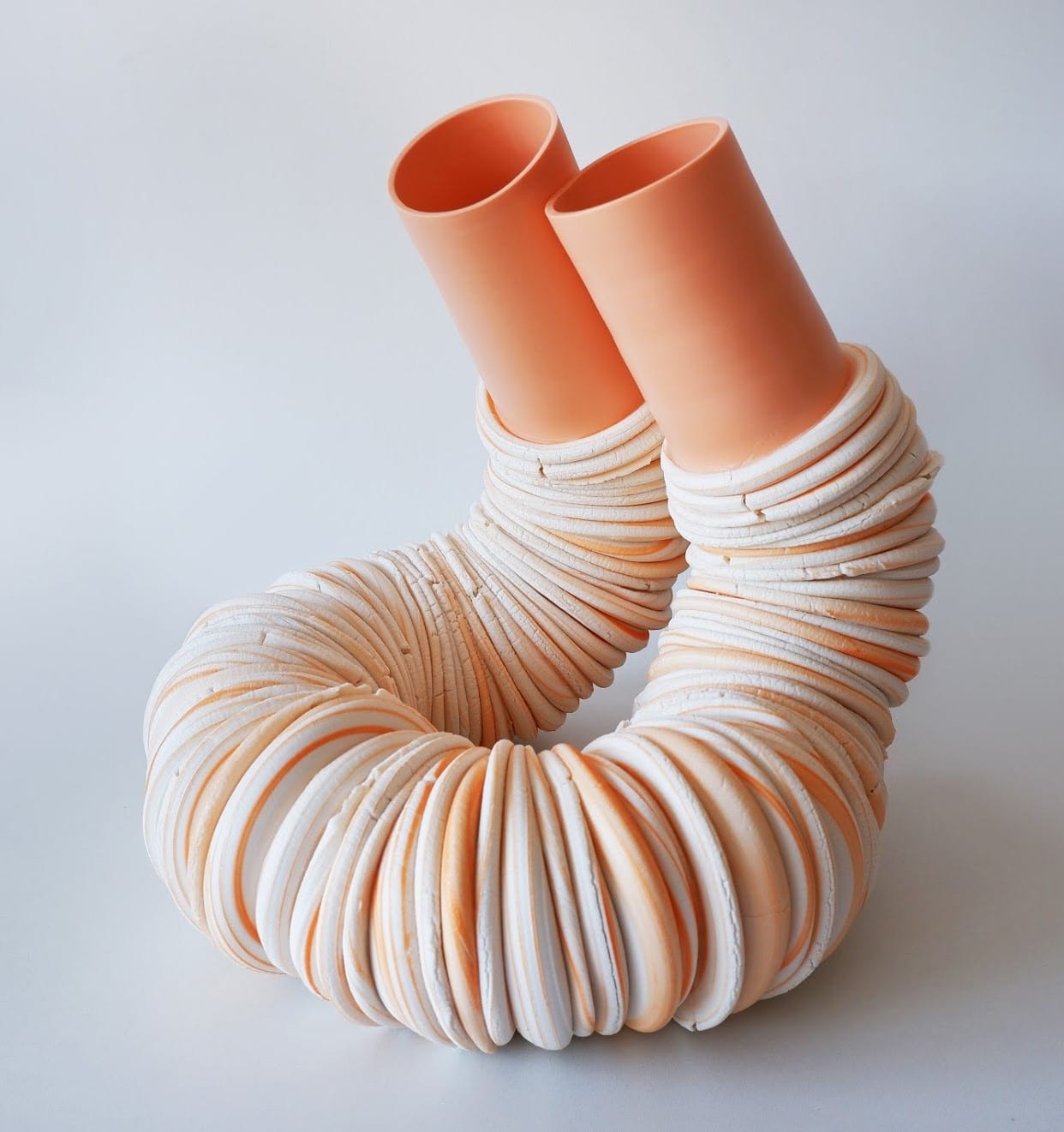
Congratulations on winning Zealous Stories: Craft! You investigate the language of making through the materiality of clay. Can you tell us how this is explored within your winning work Amass I & II?
I have always been drawn to the immediate mark making qualities of clay. Whether throwing or hand building, my interests lie in working with its raw unfired state.
These pieces explore the idea of duality, distortion vs precision, and attempt to hold a narrative of the making process through the materiality of the clay. The clay is purposely placed under duress to reveal the tension and movement in its surface and form. The whole making process pushes, pulls, compresses and slices the material to provoke a reaction. The final fired forms are the result of combining elements from these making scenarios, referencing figurative objects that hold their own different characteristics.
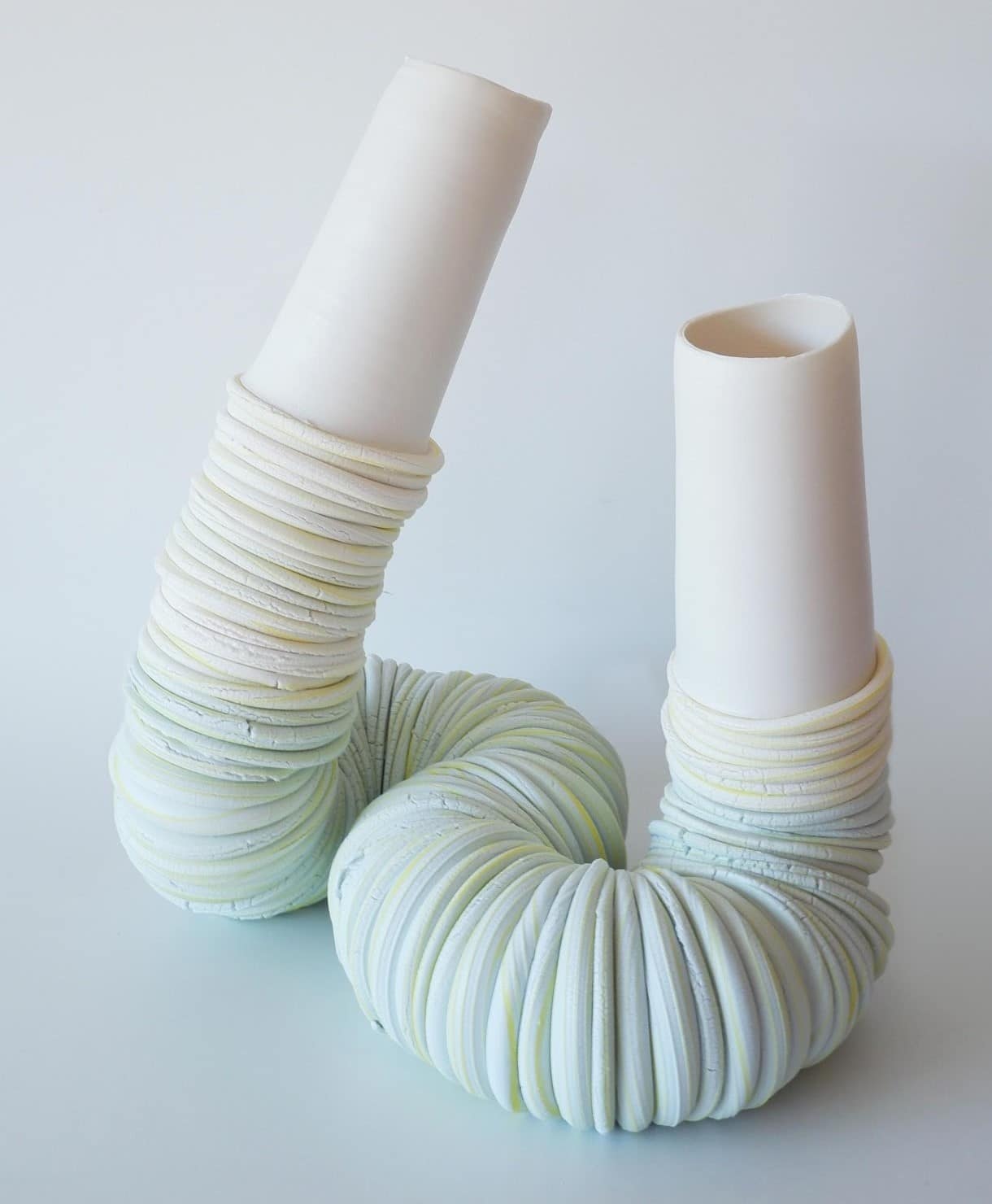
Your work combines both handmade and mechanised making. Could you tell us a little more about the process used to create these objects?
The objects are created by following the specific steps of the making process – repetition, compression and cut. Similar to production throwing, I create batches of air tight spheres with incised lines of slip. Each sphere is compressed, releasing the air pressure and stacked one on top of the other. I then cut through the stack using a press and a metal tube cutting tool. The cut is a quick ‘swift’ action that forces further distortion to the stacked forms and creates an opposing precise interior surface in reference to a vessel.
You mention that the clay ‘records’ movement of touch and tools – is the material/maker relationship fundamental to your practice?
The recurring making process of my work involves a cycle of hand skilled techniques through touch, followed by the de-skilling activity of destruction using tools, this allows new objects to evolve and enables the clay to form its own expression. I see my relationship with clay as a collaboration, in which I aim to reveal its characteristics, whilst it, in return, teaches me about its natural properties.
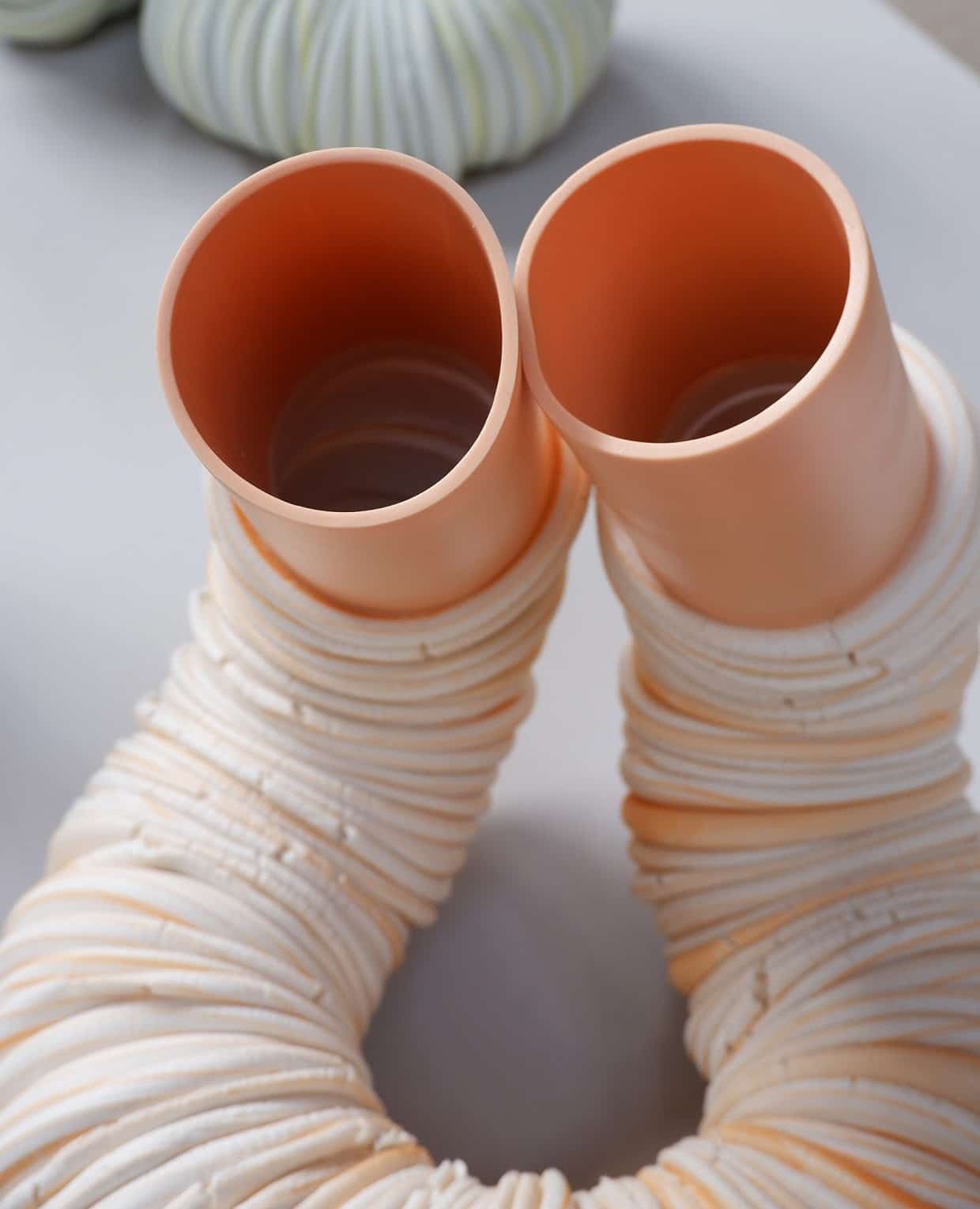
What is your main source of inspiration?
My main source of inspiration comes from primary experiences, away from a screen where ideas germinate from every aspect of day to day life, such as experimenting with materials, observing natural surroundings and analysing objects. Materials, whether natural or man-made, capture my attention and imagination. I have adapted this way of seeing from my background in graphic design, where I view everything obsessively through the lens of design aesthetics, shapes and language. The cross-over of both craft and design disciplines is evident in my work.
In what direction do you see your craft heading? Are you working on any interesting ideas at the moment?
I’m currently working on a range of smaller objects that explore playful component elements, produced within the parameters of the making process I described previously. Part of this is developing the initial surface decoration of my pieces before their distortion.
As part of Transition group of emerging artists, a collective of MA post graduates from the University for the Creative Arts, I’m working towards an exhibition next year that involves introducing other materials to my work. This will be a new direction for me where I’m hoping to scale up within the parameters of a process.
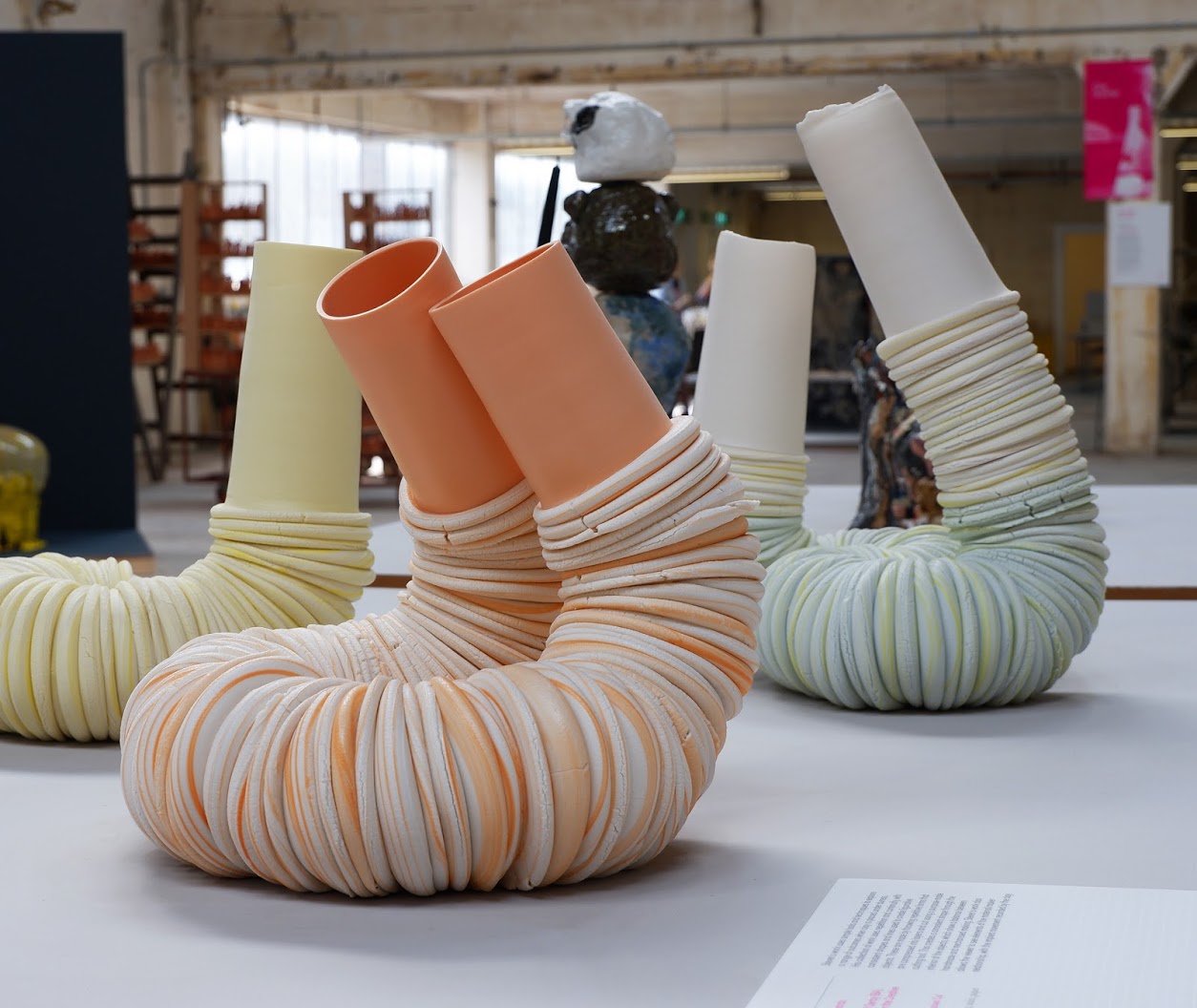
You have exhibited your work at various shows such as London Craft Week and British Ceramics Biennial. Do you have any advice for craft artists who are trying to get their work out in the public eye?
My main piece of advice is to be consistent and confident about your work. It helps to have a network of people around you, whether this is connections through study, online, studios or friends outside the arts/craft scene. Being able to share ideas and gather feedback has helped me focus the promotion of my work and discover opportunities.
It seems obvious, but being actively involved or keeping up to date with creative platforms like Zealous and the Craft Council along with other specific online sources and social media websites, like Instagram, have also proven to be a big help with presenting opportunities.
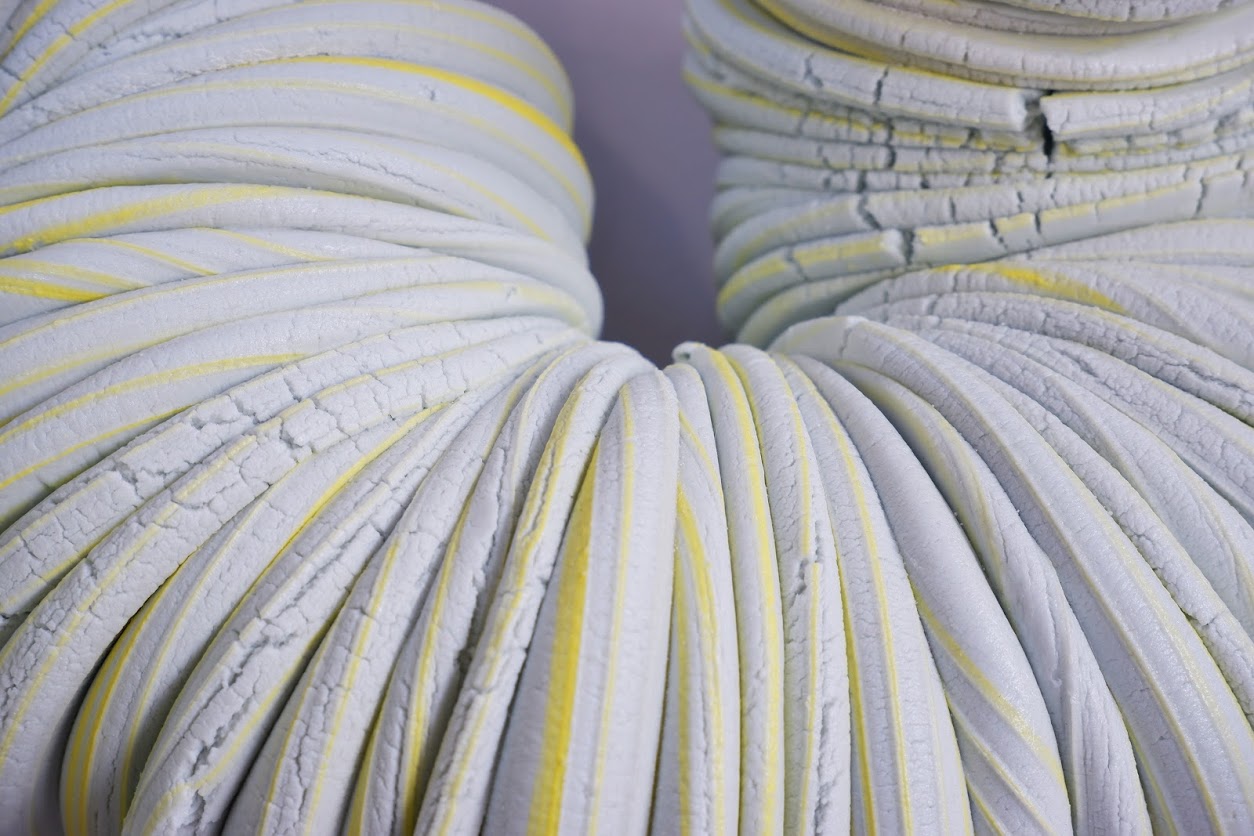
What is the main challenge that you face working in craft, and how do you overcome this?
The main challenge I face in the coming years is being able to continue establishing a sustainable practice that balances the output of finished work along with time to experiment and participate in potential commissioned projects.
Over the past 6 months I have started to focus on aligning my practice model with my vision and values. I’m also looking at business development programmes that I can learn from and implement in 2020.
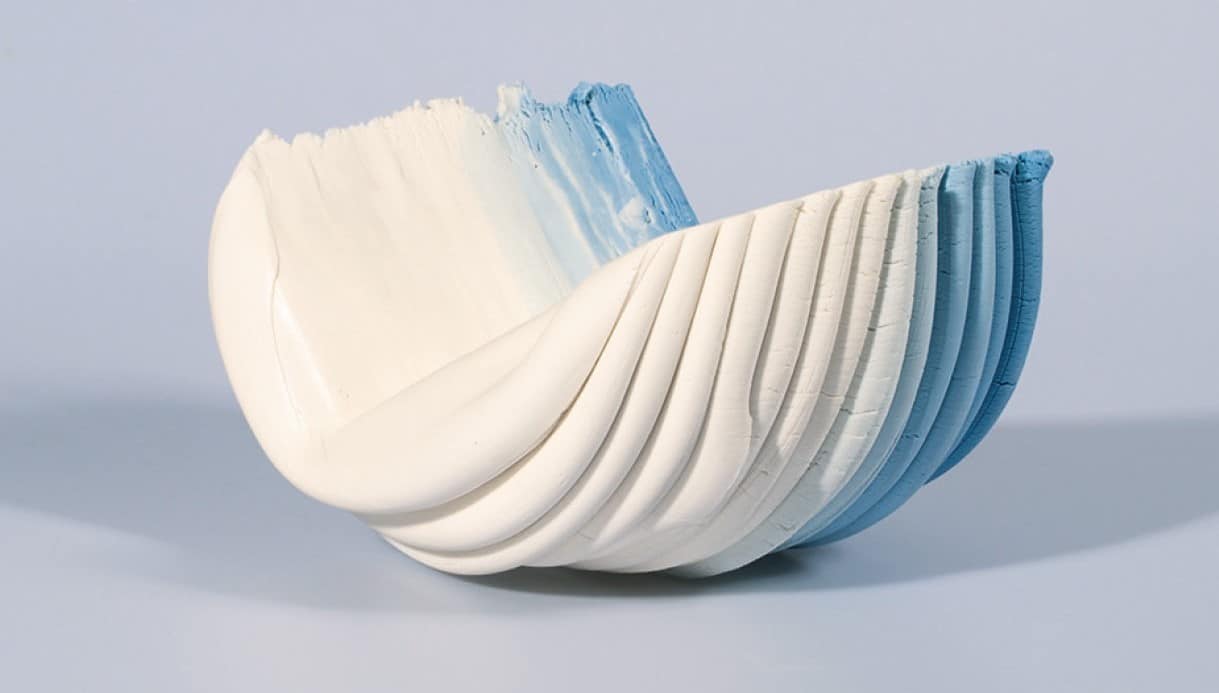
Steven Edwards’ work, Amass I & II, was selected by industry guest judges from Crafts Council, Cockpit Arts, The Devon Guild of Craftsmen and Open Culture.
Steven also won a portfolio review from ceramicist, craft fair curator and speaker, Dan Goode, a listing on the Crafts Council Directory and a subscription to Elephant Magazine.
Website / Follow Steven on Instagram
Want us to write more content like this? Give it a like
Share



